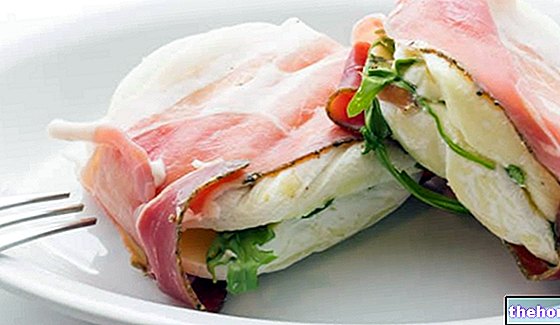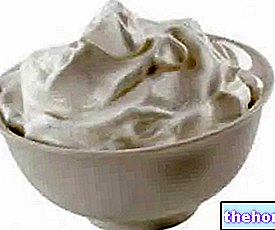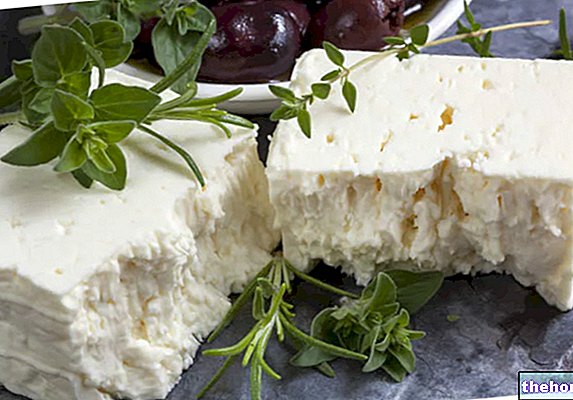Definition of GMOs - milk and dairy products are no exception

Milk, like most of the foods on the market, can be obtained from two distinct supply chains: from animals that feed on feed derived from genetically modified (GM) foods or, on the contrary, using ONLY NON-GM raw materials; however, as we shall see (separate "Organic" specification), all conventional production chains are NOT obliged to report the use of GM feeds on the label.
- It is really possible to differentiate GM foods, which are therefore derived from genetically modified organisms (GMOs), from those ... so to speak ... "natural"? -
I would reply that it DEPENDS on the "food in question: while for plants the" backcrossing "is almost inevitable (pollination), in the case of animals the situation changes considerably. Their reproduction (therefore the possibility of backcrossing) is certainly more contained (therefore controllable ) than that of vegetables.
GMO or non-GMO?
Let's start by specifying that the term GMO can mean "everything and nothing"; we know that human intervention on the genetic code of food (or rather, of the organisms that will become food) has the main objective of increasing its yield and reducing its production costs.
There are no (contrary to what one might believe) "mad scientists" who conspire behind "humanity; instead, they are researchers who, through experiments, try to increase the sustainability of agricultural production with the" aim of curing world plagues such as , for example, the depletion of planetary resources and hunger in the world. Of course, there is no lack of the lucrative aspect.
PERSONALLY, I believe that if the genetic intervention is mild, the risk of obtaining "abominations" potentially harmful to health is very low; on the contrary, if the artifact involves a crossing and recombination of totally different nucleic acids, the invasiveness of the treatment could be VERY high. To give a clear (but totally random and unreasonable) example, we could say that:
- Increasing the size of the cherry fruit using some genetic traits of the apricot (which belong to the same genus) would not give rise to a GMO very far from the species present in nature
- Conversely, by inserting a gene of the Cod in Strawberry to optimize its resistance to low temperatures, a very ambiguous product could be created.
What are the risks of using GMOs is not yet clear, above all because it is a variable that changes from one food to another; the problem is that, in most cases, the "GMO IS NOT" VISUALLY DISTINGUISHED from the natural product.
In this regard, the European Community has approved a specific Regulation on "GMOs used in the agri-food and livestock supply chain, which imposes some very specific constraints concerning numerous areas including: labeling, traceability, coexistence, experiments and crops in field. Definitely, foods and feeds that include or are produced from GMOs need a "specific wording on the label, necessary to guarantee freedom of choice by the consumer or buyer of the feed; even if, as we shall see, this legislation provides for some very specific exceptions.
So far everything "ok", the trade would seem well regulated; however, there is a detail that not everyone is aware of, namely that (based on what is mentioned in Regulation 1829/2004): the contamination of GM material within a NON GM production is allowed up to a limit of 0.9%. This clause should not alarm the kind readers, since the limit of 0.9 is sufficient to guarantee a very high level of purity; the GMO material present in 0.9% simply represents the fruit of cross-contamination in the various stages of processing (such as, for example, the dust present in the air). This does not mean that this aspect induces a "further reflection:
- Are there still foods that DO NOT contain GMOs? Cultivations that are NOT sterile and have the ability to pollinate or transfer seeds, how can they be isolated from each other, guaranteeing the absence of reciprocal crossing? -
All questions to which only the most "realistic" (without cynicism) find an easy answer.
We also remind you that NON-GM raw materials are currently a real "rarity" and that, even assuming an ethical choice on the part of breeders and producers (not always economically sustainable), these are often elements that are impossible to find.
For example, in the case of soy aimed at feeding dairy cows, the difficulties in using NON-GM raw materials are different:
- The costs of these products are 25% higher
- Their commercial availability is extremely limited
- It is necessary to keep cross-contamination below 0.9%
- Sampling difficulties need to be addressed
- In addition to the procurement costs, it is necessary to undergo the high costs of production analyzes.
- How is it possible that the products destined to feed livestock are mainly GM, if on the market almost all meat, eggs and milk or derivatives DO NOT have the appropriate label for GMOs? -
Simple, as an EXCEPTION of the aforementioned specific Regulation for GMOs of the European Community, "GMO labeling" is not required for food products such as meat, milk and eggs, obtained from animals NOURISHED with GM feed or treated with MEDICINAL PRODUCTS produced with genetic engineering techniques. This statement derives from the fact that, according to many studies carried out on the animal digestive process on transgenic DNA (that of GMOs), there is no possibility that this could originate an endogenous contamination (inside the organism) affecting milk, meat and eggs.
To be clearer: if the cow was transgenic, the milk would have to carry a specific GMO label; on the contrary, if the cow is fed with GM corn or soy, the producer has no obligation to specify the use of GMOs on the label. This is because the animal breaks down the gene sequences of the GM food and then re-assembles them and gives life to the products of its own metabolism.
GMOs in milk: the most recent studies
A fairly recent study carried out by Italian researchers has highlighted the presence of transgenic DNA in the milk of cows fed with GMO feed, but it is not clear whether this was the result of endogenous contamination (from the digestive tract to the blood and then to the milk) or exogenous. (cross-contamination in the processing processes of the tested milk). However, these results have alarmed the research bodies that have worked to investigate the topic. To clarify its veracity, the Istituto Superiore di Sanità (DSPVSA - Department of GMOs and Xenobiotics of fungal origin - Società Produttori Sementi SpA) has conducted a very interesting in-depth study entitled: Qualitative / quantitative evaluation of transgenic DNA in milk produced by farms with different types of housing (File P9A).
Quoting verbatim, the research concluded that: "in NO case was there any passage of EXOGENOUS transgenic material from the feed to the corresponding milk, EXCLUDING the possibility of environmental contamination that would have caused the transfer of GM material contained in the air-dispersed powders in the housing and / or milking environments into the milk itself, even in cases of 90% RRS feed. ANALOGUE consideration must be drawn for the possible presence of ENDOGENOUS transgenic material, as no quantifiable transgenic DNA was found in the milk samples taken directly from the cows. The study therefore demonstrates that even in the presence of housing carried out with GM feed the passage of transgenic DNA into the milk does not occur'.
A further Spanish study conducted by Ciència Animal i dels Aliments, Universitat Autonoma de Barcelona
and titled: Effects of corn silage derived from a genetically modified variety containing two transgenes on feed intake, milk production, and composition, and the absence of detectable transgenic deoxyribonucleic acid in milk in Holstein dairy cows,
concluded that: "all milk samples were negative for the presence of transgenic DNA; moreover, the corn used in the "feeding of dairy cows does not change their nutritional composition and does not increase their production. No transgenic DNA or mutated proteins were detected in the analyzed milk".
New GMOs and human trials
In 2006 it was possible to obtain a GM pig containing omega-3 type fats, therefore beneficial to human health, as opposed to saturated ones, which are "harmful".
Scientists have also been quite busy in the fisheries sector; With the awareness that intensive fishing is slowly emptying both the seas and the inland waters of numerous areas of the globe, some researchers have proposed a GM-farmed salmon that reaches maturity in half the time compared to natural salmon. The use of this species would make it possible to reduce the exploitation of natural resources for the benefit of the ecosystem.
In 2011, a variety of cows integrated with some human genes were produced in China to obtain a milk comparable to ours, thus compensating for the lack of breast milk of the nurses and drastically reducing the costs inherent in the supply of formulated milks; The cow in question was found to be identical on the whole to the original one, and the same was proposed by Argentine researchers while, in New Zealand, scientists managed to obtain a variety of cow secreting almost "hypoallergenic" milk.
In 2012, a GMO was developed in Canada capable of indirectly reducing phosphate pollution in water, with the aim of moderating algal growth and asphyxiation (with consequent death) of local fish fauna.In this regard, the faeces of farmed pigs have proved to be one of the major sources of phosphates that pour into local waters; well, through the "insertion of a precise genetic code that translates for the development of a salivary enzyme responsible for the degradation of phosphates, the researchers were able to produce a pig that reduces phosphate emissions from 30 to 70.7% compared to" native animal.
At the same time, the possibility was taken into consideration that, in addition to genetic contamination between plants and animals, an interaction (or better, a recombination) could take place between the GMOs produced by man and microorganisms (bacteria) or molecular micro-machines. (viruses) already present in nature. Boasting an "excellent ability to acquire and release fragments of genetic code for evolutionary purposes, viruses and bacteria have led scientists to ask themselves a crucial question:"If these viruses and bacteria obtained some of the genes we modified, could they also acquire drug resistance? Also, would they be able to transfer them to man?"In this regard, in 2004 a research was developed on the possibility that GM soy could transfer the altered genes to the intestinal flora of the human being. The subjects were partly healthy and partly deprived of an intestinal portion; l" The outcome of the experiment was negative even if, in some of those which lacked part of the intestine, a trace of genetic adaptation to antibiotics was found; this aspect is however attributable to the natural evolution of the microorganisms subjected to these molecules both in zootechnics, and in the pathological treatment of the human being. The claim is justified by the fact that this characteristic was already present before the administration of GM soybeans and did not change with the application of the experiment.
Bibliography:
- Qualitative / quantitative evaluation of transgenic DNA in milk produced by farms with different types of housing (File P9A) - the "Istituto Superiore di Sanità (DSPVSA - Department of GMOs and Xenobiotics of fungal origin - Società Produttori Sementi S.p.A.) - http://www.iss.it/binary/rogm/cont/RELAZIONE_FINALE_BARCHI.pdf
- Effects of corn silage derived from a genetically modified variety containing two transgenes on feed intake, milk production, and composition, and the absence of detectable transgenic deoxyribonucleic acid in milk in Holstein dairy cows - Calsamiglia S, Hernandez B, Hartnell GF, Phipps R - Ciència Animal i dels Aliments, Universitat Autónoma de Barcelona, 08193-Bellaterra, Spain - J Dairy Sci. 2007 Oct; 90: 4718-23 - http: //www.ncbi .nlm.nih.gov / pubmed / 17881694
- Genetically modified food controversies - Horizontal gene transfer from plants to animals -http: //en.wikipedia.org/wiki/Genetically_modified_food_controversies#Horizontal_gene_transfer_from_plants_to_animals
- Potential Adverse Health Effects of Genetically Modified Crops - Bakshi, A. - Journal of Toxicology and Environmental Health, Part B 6: 211–226 - http://www.tandfonline.com/doi/abs/10.1080/10937400306469#.Ud_st6z_Rdg
- Genetically modified organism - Production or food quality traits - http://en.wikipedia.org/wiki/Genetically_modified_organism#Production_or_food_quality_traits%20_traits
- Generation of cloned transgenic pigs rich in omega-3 fatty acids - Nature Biotechnology 24: 435–436 - http://www.nature.com/nbt/journal/v24/n4/full/nbt1198.html
- Genetically engineered pigs killed after funding ends - Schimdt, Sarah - Postmedia News, June 22, 2012 - http://www.canada.com/technology/science/Genetically+engineered+pigs+killed+after+funding+ends/6819844/story.html.
- Generation of cloned transgenic pigs rich in omega-3 fatty acids - Lai L et al. - Nature Biotechnology 24: 435–436 - http://www.nature.com/nbt/journal/v24/n4/full/nbt1198.html
- Scientist bred goats that produces spider silk - Zyga, Lisa - http://phys.org/news194539934.html/
- An Entrepreneur Bankrolls a Genetically Engineered Salmon - Published: May 21, 2012. Accessed October 7, 2012.




























